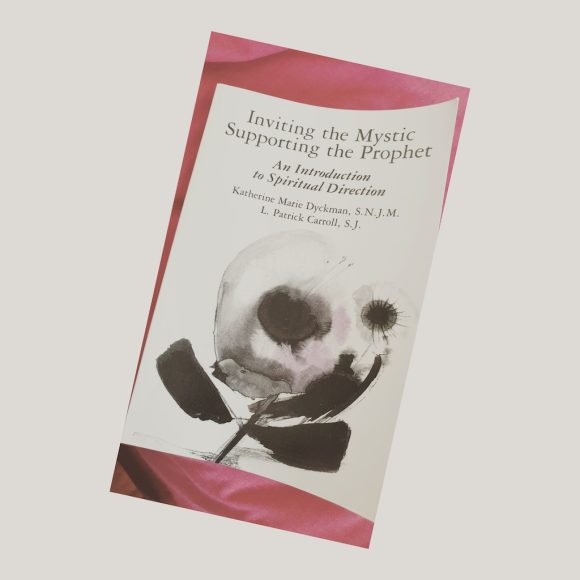Initially I was intrigued by the title of this book written by Katherine Marie Bykman & Patrick Carroll. It caught my curiosity. As I read the foreword and introduction, I felt drawn to the authors’ thesis as it was something I wholeheartedly agreed with: the tests of authentic prayer are in the fruit of the praying life or the community. I was interested in the relationship between prayer and service, mystic and prophet.
I was not disappointed as the authors describe the symbiotic relationship between the mystic and the prophet in the believer’s life. “The starting point is not as important as that the circle be complete: prayer leading to life, and life leading to prayer. Real prayer leads to involvement; real involvement leads to prayer. Deeper spirituality impels to action; action impels to deeper spirituality, and the circle continues and deepens. The mystic becomes prophet, the prophet becomes mystic” (Dykman & Carrol, 80). I used to believe that every plan or service should spring from prayer, but now I am willing to concede that for some people, action came first, and I should not disparage some “prayerless” action, but guide such active persons to seek God in prayer more.
I like the authors’ description of spiritual direction. It is not narrowly confined to the guided development of the directees’ prayer life, but a journey with them in their larger faith development, which includes conversion, struggle, integration, awareness of reality and a call to radical love, not just the prayer life. The call to radical love would include immersion in works of service, justice and compassion. “All these holy people are holy not just because they pray or write eloquently about that prayer, but because their prayer leads them to respond to Christ in the given historical cultural moment. All of them respond in a unique way to unique situations in which they find the Lord calling to his people. But all respond outside themselves in service. Each mystic becomes a prophet”(Dykman & Carrol, 82). This reminded me how this emphasis on mission and service is so similar to Ignatian prayer spirituality.
The chapter on PRAYING THROUGH THE DESERT is particularly enlightening for me. The authors gave two descriptions of the desert experience in prayer: one from St John of the Cross of the 16th Century mystic and poet, and another through Thomas Merton a 20th Century mystic and poet. I found both helpful and complementary. The advice to spiritual directors leading others through the desert experience is to help the directee look at his or her larger or entire life. “We cannot judge our prayer, whether it be consoling or desolate, by how we feel when we pray, but rather by how we are loving when we live” (62). A person’s prayer life may be desert-like but an examen of his life may reveal God’s loving activities and presence in many areas of his life of service. This helps him see that God’s love is as strong as ever and that the desert may be God’s way of moving on the purification of his faith in and love for God and not the result of his sin.
I enjoyed this book and found myself underlining many sentences and paragraphs. These definitely deserve further reflection and discussion with the Lord.
